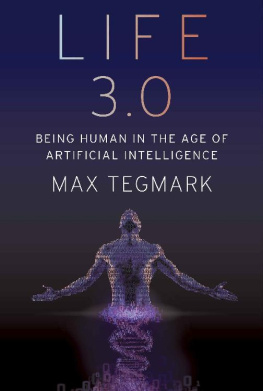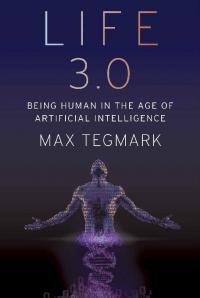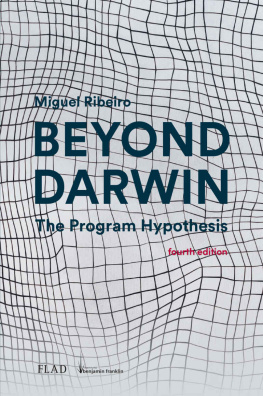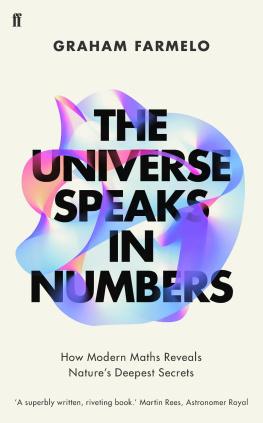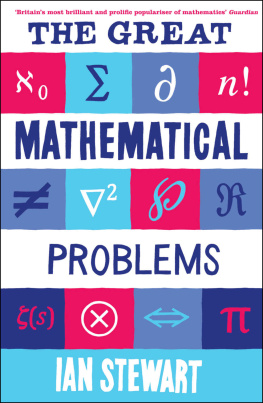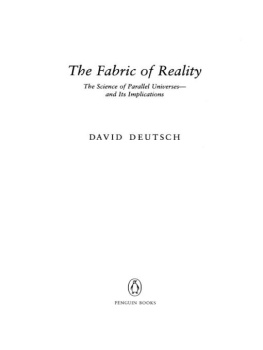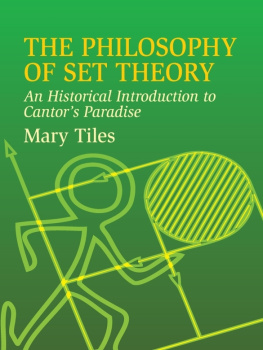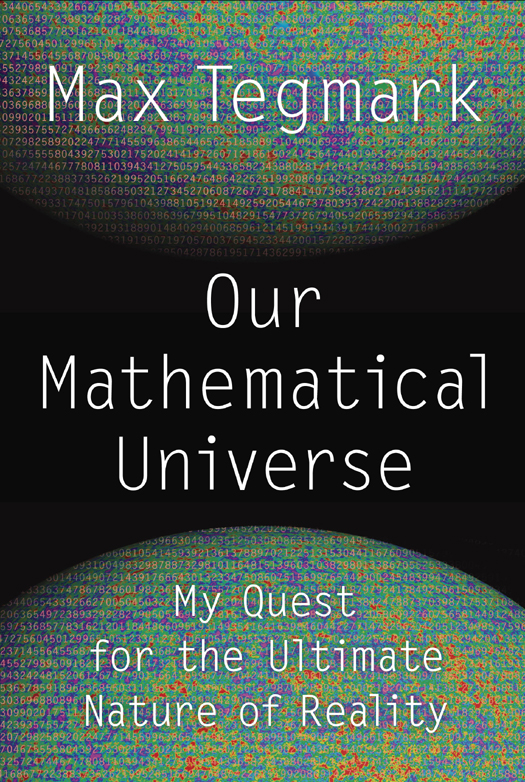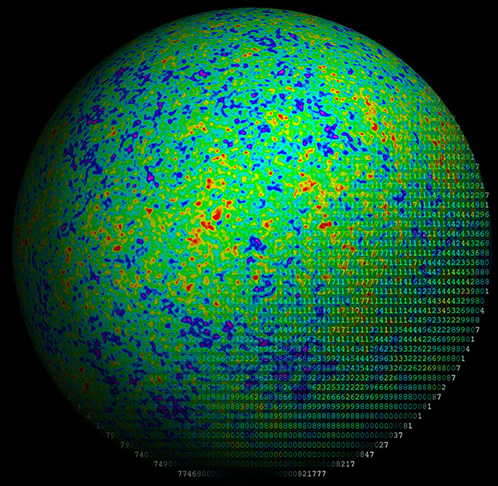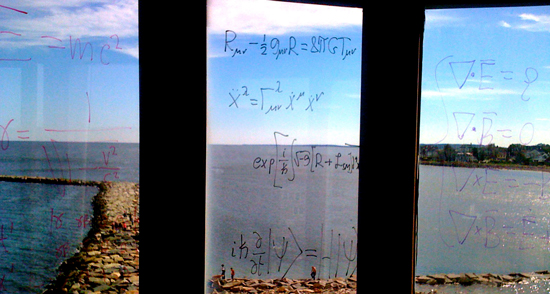T HIS I S A B ORZOI B OOK
P UBLISHED BY A LFRED A. K NOPF
Copyright 2014 by Max Tegmark
All rights reserved. Published in the United States by Alfred A. Knopf, a division of Random House LLC, New York, and in Canada by Random House of Canada Limited, Toronto, Penguin Random House Companies.
www.aaknopf.com
Knopf, Borzoi Books, and the colophon are registered trademarks of Random House LLC.
Library of Congress Cataloging-in-Publication Data
Tegmark, Max, author.
Our mathematical universe : my quest for the ultimate nature of reality / Max Tegmark.First edition.
pages cm
ISBN 978-0-307-59980-3 (hardback)
1. CosmologyMathematics. 2. PhysicsMathematics.
3. Plurality of worlds. I. Title.
QB981.T44 2013 523.10151dc23 2013016020
eBook ISBN: 978-0-385-35049-5
Jacket image: sphere representing the edge of our observable Universe, seen 400,000 years after our Big Bang. Courtesy of the author and the Planck satellite team
Jacket design by Jason Booher
v3.1
T O M EIA ,
WHO INSPIRED ME TO WRITE THIS BOOK
Contents
Preface
Im truly grateful to everyone who has encouraged and helped me write this book, including:
my family, friends, teachers, colleagues and collaborators for support and inspiration over the years,
Mom for sharing her passion and curiosity for lifes big questions,
Dad for sharing his fascination and wisdom about mathematics and its meaning,
my sons, Philip and Alexander, for asking such great questions about the world and for unwittingly providing anecdotes for the book,
all the science enthusiasts around the world whove contacted me over the years with questions, comments and encouragement to pursue and publish my ideas,
my agents, John and Max Brockman, for convincing me to write this book and setting everything in motion,
those who gave me feedback on parts of the manuscript, including Mom, my brother Per, Josh Dillon, Marty Asher, David Deutsch, Louis Helm, Andrei Linde, Jonathan Lindstrm, Roy Link, David Raub, Shevaun Mizrahi, Mary New, Sandra Simpson, Carl Shulman and Jaan Tallinn.
the superheroes who commented on drafts of the entire book, namely Meia, Dad, Paul Almond, Julian Barbour, Phillip Helbig, Adrian Liu, Howard Messing, Dan Roberts, Edward Witten and my editor, Dan Frank, and most of all,
my beloved wife, Meia, my muse and fellow traveler, whos given me more encouragement, support and inspiration than I ever dreamed of.
1

What Is Reality?
trees are made of air, primarily. When they are burned, they go back to air, and in the flaming heat is released the flaming heat of the Sun which was bound in to convert the air into tree. And in the ash is the small remnant of the part which did not come from air, that came from the solid earth, instead.
Richard Feynman
There are more things in heaven and earth, Horatio, than are dreamt of in your philosophy.
William Shakespeare, Hamlet, act 1, scene 5
Not What It Seems
A second later, I died. I stopped pedaling and hit the brakes, but it was too late. Headlights. Grille. Forty tons of steel, honking furiously, like a modern-day dragon. I saw the panic in the truck drivers eyes. I felt time slow down and my life pass before me, and my very last thought in life was I hope this is just a nightmare. Alas, I felt in my gut that this was for real.
But how could I be completely sure that I wasnt dreaming? What if, just before impact, Id perceived something that didnt happen except in dreamland, say my dead teacher Ingrid alive and well, sitting behind me on my bike rack? Or what if, five seconds earlier, a pop-up window had appeared in the upper left corner of my visual field, with the text line Are you sure its a good idea to zoom out of this underpass without looking to the right? materializing above clickable Continue and Cancel buttons? Had I watched enough movies like The Matrix and The Thirteenth Floor, I might have started wondering whether my whole life had been a computer simulation, questioning some of my most basic assumptions about the nature of reality. But I experienced no such things, and died certain that my problem was real. After all, how much more solid and real than a forty-ton truck can something get?
Schrdinger equation, the supreme law of quantum motion, needs to be somehow amended. So did I really die? I just barely made it in this particular universe, but did I die in another equally real universe where this book never got written? If Im both dead and alive, then can we somehow amend our notion of what reality is so that it all makes sense?
If you feel that what Ive just put forth sounds absurd and that physics has muddied the waters, it gets even worse if we consider how I personally perceived this. If Im in these two different places in two parallel universes, then one version of me will survive. If you apply the same argument to all other ways I can die in the future, it seems there .
Are you surprised that physics has uncovered our reality to be much stranger than wed imagined? Well, its actually not surprising if we take Darwinian evolution seriously! Evolution endowed us with intuition only for those aspects of physics that had survival value for our distant ancestors, such as the parabolic orbits of flying rocks (explaining our penchant for baseball). A cavewoman thinking too hard about what matter is ultimately made of might fail to notice the tiger sneaking up behind her and get cleaned right out of the gene pool. Darwins theory thus makes the testable prediction that whenever we use technology to glimpse reality beyond the human scale, our evolved intuition should break down. Weve repeatedly tested this prediction, and the results overwhelmingly support Darwin. At high speeds, Einstein realized that time slows down, and curmudgeons on the Swedish Nobel committee found this so weird that they refused to give him the systems far out there in space who lived identical lives up until that fateful moment, and then decided not to look to the right.
In other words, discoveries in physics challenge some of our most basic ideas about reality both when we zoom into the microcosm and when we zoom out to the macrocosm. As well explore in , many ideas about reality get challenged even on the intermediate scale of us humans if we use neuroscience to delve into how our brains work.
Last but not least, we know that mathematical equations offer a window into the workings of nature, as metaphorically illustrated in that all the above-mentioned bizarreness pales in comparison, forcing us to relinquish many of our most deeply ingrained notions of reality.
Figure 1.1: When we look at reality through the equations of physics, we find that they describe patterns and regularities. But to me, mathematics is more than a window on the outside world: in this book, Im going to argue that our physical world not only is


